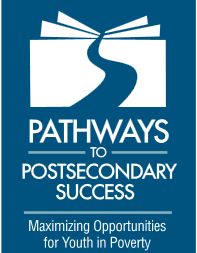Study finds key criteria that determine college success for low-income youth
 <Click on this link to download this report.>
<Click on this link to download this report.>
A five-year study by UC researchers that included a survey of California youth and interviews with more than 300 young adults about their interactions with educational institutions has identified the five key issues that matter most for understanding and improving college success for low-income students. The $7.5 million study, “Pathways to Postsecondary Success: Maximizing Opportunities for Youth in Poverty,” spotlights the importance of student voices, an understanding of student diversity, asset-based approaches to education, strong connections between K–12 and higher education, and institutional support for students. The study was funded by the Bill and Melinda Gates Foundation and was issued by the University of California’s All Campus Consortium on Research For Diversity (UC/ACCORD) at UCLA’s Graduate School of Education and Information Studies (GSE&IS).
“Our study began in 2008, at the onset of a critical economic downturn—the Great Recession—which impacted education and the labor market in considerably complex ways,” said UC/ACCORD director Daniel Solórzano, co-principal investigator on the study and a professor of social sciences and comparative education at GSE&IS. “It was clear the recession had an effect on both colleges and students. Budget cuts slashed enrollments at campuses and decreased the resources for those already enrolled. Many low-income students faced even greater financial instability from the scarcity of work or sudden unemployment of family members. Therefore, at a time when students’ required additional support to stay on the path through college, the supports and conditions that are vital to their success were disappearing or overburdened on campuses.”
While “Pathways” reports on national data, the study focused on California, which has the largest number of community colleges (112). The vast majority of low-income students in California who pursue post-secondary education begin at community colleges.
Principal findings from the study include:
- Student voices matter: Education is a powerful force in the lives of low-income youth, and hearing what students say about their experiences is essential to understanding their educational pathways and outcomes. Financial difficulties, lack of available classes, transportation problems and a lack of availability of child care are obstacles to many low-income students’ success. Yet students reported that when they experienced caring educators and high-quality instruction in high school or college, this made a difference in their engagement and success in college.
- Diversity matters: Low-income youth are a diverse group, and understanding the similarities and differences in this student population enables administrators to better plan college success initiatives. In California, students of color make up the majority of community college enrollment, and many are the first in their family to attend college. Almost half (46 percent) of community college students are older, 54 percent work full-time and 16 percent are parents. “Common understandings of traditional college students may be less relevant as we plan for the growing number of community college students who are working full-time, raising families and have many responsibilities outside of school,” said Amanda L. Datnow, co-principal investigator on the study and a professor of education at UC San Diego. “These students are quickly becoming the majority, and we need to orient around their needs.”
- Assets matter: Report findings indicate that an asset-based approach helps education administrators tap into and foster students’ strengths in order to support college success. Low-income students enroll and often persist in college, although not always in traditionally defined ways. They arrive with high aspirations to do well and either finish their certificate program or transfer to a four-year college. Successful programs at the colleges affirm and tap into these assets.
- Connections between K–12 and higher education matter: High-quality K–12 schooling, combined with college preparatory resources, helps ensure college-going success for students. Nationally, 78 percent of low-income youth do not complete a college-preparatory curriculum in high school. In California, 85 percent of community college students require remediation in math and English to complete coursework they should have been taught in high school. Therefore, to ensure college readiness, better articulation between high schools and colleges needs to occur, and students need accurate information about enrollment practices and assessment procedures.
- Institutional supports and conditions matter: While funding cuts have resulted in reductions in mentoring programs and supports for students, financial difficulties, transportation problems and a lack of child care also frustrate many low-income students’ attempts to fulfill their goals. Low-income students are particularly dependent on financial aid to attend college, and information about resources—including academic and other services—must be integrated and streamlined to make the existing process less complicated and easier to access.
The multi-method study included the development of a monitoring tool to track educational opportunities for low-income youth. It also identified a set of indicators at the organizational level of community college campuses that support student success.